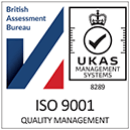The importance of having the right tool for any job is very pertinent to late phase research and is similar to the saying, “if your only tool is a hammer, every problem looks like a nail”. This also neatly expresses how not having the correct tool to address any given challenge can discourage and disengage stakeholders to proceed in solving the problem.
As technology providers specialising in late phase research, we have immersed ourselves in creating solutions for the unique challenges of this distinct field. However, in the wider industry, the need for dedicated technology for late phase research is not always clearly understood.
It is widely understood that collecting data in a real world setting differs significantly from that of clinical trials. Unfortunately, all too often, the premise of adapting clinical electronic data capture (EDC) technology for late phase research is assumed to be adequate. This assumption is false.
To be effective in delivering late phase studies, it is critical that key stakeholders responsible for designing and managing research studies understand the unique pain points and stumbling blocks that the end users might face. By developing this understanding, we can ensure that the technology chosen to carry out the research addresses these pain points adequately to achieve a successful outcome. In this piece, we will tackle seven common challenges late phase researchers face, and the ways technology can help to resolve them.
1. Patients are followed as part of standard practice, rather than following a strict protocol
Late phase studies need to be designed around routine clinical care practices where patients are being treated following the standard of care without any intervention. Unlike clinical research, where the study follows a rigid protocol, late phase research tends to follow the patient’s experience in routine care. In practice, this means significant variation can be expected between individual doctors, sites, and countries regarding how they treat their patients and therefore what information is captured. For example, there may be an expectation of three visits in a clinical trial. In clinical trial workflows, these visits must be reflected in the database, and a missed visit would result in a protocol violation. By contrast, in late phase research, the visit frequency or the assessments the doctor conducts during them cannot be dictated. The visit scenario described above wouldn’t be a protocol violation; it reflects the real world of patient treatment – and in late phase research, all of the information captured about the patient that is relevant to the research is valuable.
In considering this challenge, it is important to put in place the right approach to data capture that doesn’t cause doctors an undue burden by demanding they enter information that is not available. Workflows need to allow flexibility to follow the patient journey while at the same time collecting data on critical data fields relevant to assess the endpoints of the research being carried out.
2. Sites are often research naïve or infrequent 2 system users
Clinical sites tend to be regularly involved in research and have a clear incentive for participation with the potential of involvement in a new drug that could benefit their patients. On the other hand, in late phase research, sites’ primary focus is following their patients rather than providing data, especially if it involves additional efforts outside usual routines. As researchers use the systems infrequently, they are not typically super-users of data capture technologies.
Logical processes, single data entry sessions related to specific time points/visits/key events, and straightforward data flows, can encourage consistency in data collection by sites. By designing flows for data collection that follow the availability of data based on key events in standard of care, we can ensure the technology is intuitive and a painless data entry process for sites.
3. Low levels of monitoring demand novel approaches to checking data
The process of monitoring and cleaning data is distinct in late phase research. In clinical trials, there is often 100% monitoring predominantly via source data verification which requires on-site visits to check the robustness, accuracy and quality of the data. The same is rarely true for late phase research. In reality, the authenticity of late phase data capture is highly valuable and is the main purpose of collecting data in real world settings. Therefore, the data monitoring is often done remotely and not as detailed. In most instances data captured is either simple transference from another record to the study system, or in the case of direct capture from patients the data entered is the source. In this context, data issues can often be attributed to transcription errors, genuine outliers or genuinely missing data. However, these errors still need to be queried to ensure good data quality. The key to solving them in this setting is querying them at the point of entry. Built-in checks in the system that recognise anomalous values and pick up transcription errors in real-time are the simplest approach here, allowing the user to verify if the data is correct or respond by modifying the data in real time resolves these issues and also significantly reduces the data management effort and costs further down the line.
4. Multiple international sites with language and protocol variations
Late phase studies are often international involving multiple countries that require local languages, and protocol variations in line with local guidance. Furthermore, we can expect frequent protocol amendments as these studies tend to be long term and could run for over 10 years. This lends itself to the need for a single design tool which can accommodate these varied formats within the same study database.
Unfortunately, traditional systems do not typically accommodate regional language variations, varied protocols, and fast turnaround of protocol amendments within a single system. These traditional approaches often demand separate design systems and databases which can result in slower turnaround and delayed collection.
Tools offering a unified data capture approach to rolling out protocol and language variations to different sites and configurable per user, simplify processes and increase efficiency.
5. Over or underreporting of safety events
Monitoring patient safety is one of the most crucial requirements of late phase research. There are various study designs that manage, evaluate, and minimise risks to patients for newly approved drugs. These studies monitor for additional adverse events that become apparent in the real world beyond the clinical trial or measure the effectiveness of risk management measures. They may either be required by regulators or volunteered by sponsors themselves. To meet safety obligations, researchers need to ensure that all relevant events are reported into the database. On the other hand, unrelated events must not be over-reported as this will affect the quality of the data.
The best approach to address this issue is firstly to ensure that safety events can be reported in a timely manner, especially in the case of serious adverse events. This means that as soon as the doctor becomes aware of an adverse event, they can report this into the database at any time or prompt that a possible adverse event may have occurred based on clinical assessment data.
The latter approach is only possible if the safety data is captured within the same database as the clinical data. This further encourages consistency in safety reporting by enabling all relevant clinical data to be linked to the safety report.
Secondly, doctors should be able to update ongoing adverse events that are sequentially numbered. This functionality guards against the incorrect reporting of a new adverse event and inaccurately reflects the number of AEs reported in the study.
6. Low patient engagement
Long studies that require patients to enter extensive data outside of their day-to-day routine can result in low patient engagement.
Patients need to feel that their contribution to data will provide valuable insight into improved quality of care and or improved drugs to treat their illness/disease. One of the key considerations is to make the process of data collection easy, with nonintrusive data workflows and enablement through EDC tools which require minimal training and include built-in progress charts and data collection schedules to guide patients through the process.
Patients are more likely to provide consistent data via online forms as opposed to paper, if the tools can be supported on the patient’s own devices. Therefore a “bring your own device” (BYOD) approach to the study design in addition to device provisioning can ensure patient engagement. However, it is important to understand that not all patients will be confident or able to complete online forms for example, if they are older age patients or adolescents. Therefore, the data capture tools should enable access for caregivers and parents/guardians, which in turn enables greater compliance with the data collection required for the study.
7. Late phase research data comes from multiple, disparate sources
Late phase studies are becoming broader with multiple data sources and structures that move further from randomised controlled trials (RCTs). Typically, the data comes from various disparate sources, whether that is hospital data, wearables, laboratory data, electronic health records, or even patients completing paper records. There is a growing need to access this vast amount of data or to integrate to the various systems to collect appropriate data for late phase research. However, existing data and disparate systems mean the data is not organised consistently, and is often unstructured, incomplete, and not optimised for research. To utilise this data, measures to ensure data is complete and accurate is key for it to be relevant and informative for healthcare decisions.
It is common to buy technology/databases from multiple vendors and consolidate the data into a single database. However, with this comes the challenge of integrating the different databases and therefore associated risks and costs.
Increasingly there is a demand for more streamlined integrative technology that can be a complete solution for all late phase research data collection. For example, Baseline Plus offers eConsent and ePRO tools within the same late phase EDC data capture platform, all designed through a single design tool to save integration efforts, simplify the workflow and enable integrated reporting.
To return to our opening analogy, selecting the right tools for the job is essential. By understanding the specific nuances of late phase research, we can implement the right solutions to overcome potential pitfalls and ensure these crucial studies run smoothly.


